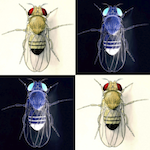Visualizing Complexity: Flowcharts as the Boundary Objects of Software Development
November 01, 2011 #research
From the very earliest days of electronic computing, “flow diagrams” (later “flowcharts”) have been used to represent the conceptual structure of complex software systems. In much of the literature on software development, the flowchart serves as the central design document around which systems analysts, computer programmers, and end-users communicate and negotiate. And yet the meaning of any particular flowchart was often highly contested, and the apparent specificity of such design documents rarely reflected reality. In fact, some of the first software “packages” (commercial applications that could be purchased off-the-shelf) were used to reverse-engineer the flowchart specification from already developed computer code. That is to say, the implementation of many software systems actually preceded its own design! Using the sociological concept of the boundary object, this paper will explore the material culture of software development, with a particular focus on the ways in which flowcharts served as political artifacts within the emerging communities of practices of software development.
Is Chess the Drosophila of AI?
October 21, 2011 #publications

Update: The “Chess as Drosophila” article was recently awarded the 2013 Maurice Daumas Prize.
My article “Is Chess the Drosophila of AI? A Social History of an Algorithm” is now available as an online preprint from Sage Journals Online. The print version will appear in the next issue of Social Studies of Science. Depending on your level of access to Sage Online, you can read an advance copy of the full version.
For those of you without access to the Sage database, a draft version of the computer chess paper is available.
Update: The final version of the Chess as Drosophila piece is now available in the February 2012 issue of Social Studies of Science.
The Computer Girls
September 15, 2011 #media
My research on the history of women in computer programming has been getting some national media attention lately. While I am told that imitation is the sincerest form of flattery, the unattributed “borrowing” of my work was disconcerting, to say the least. Nevertheless, if you are interested in my reseach on the “masculinization” of computer programming, it can be found in both The Computer Boys Take Over and in an essay published in a recent collection edited by Tom Misa called Gender Codes: Why Women are Leaving Computing (Wiley, 2010).
My response to the Washington Post editorial about the plagiarism of my work can be found here.
Histories of Computing
September 09, 2011 #publications
In the current issue of Science, I have a review of a recently published collection of the late Princeton historian Michael Mahoney’s essays on the history of software [Histories of Computing, Harvard University Press, 2011, Thomas Haigh (ed.)] Mahoney was one of the intellectual giants of the history of computing. I studied with him in graduate school, and he was a friend and colleague for many years afterward. For any scholar of the information age, this is a collection well worth owning. Read the review: among other things, it is very likely the only time I will get published in Science.
A brief but insightful quote from the first of Mike’s essays to appear in the volume about the importance of studying the histories of computing: “What is truly revolutionary about the computer will become clear only when computing acquires a proper history.”
Historical Perspectives on Computing & Communications
August 22, 2011 #teaching

The history of the information age is about more than just the electronic digital computer. It is the story of a wide range of human activities, scientific practices, and technological developments. The story begins in the early 19th century with the emergence of new demands for communications and information management — from scientific researchers, expanding government bureaucracies, and increasingly national and international corporations. It includes not only “computers’’ (itself a large and diverse category) but data processing, communications, and visualization technologies, as well as people, practices, and organizational structures. In this new graduate seminar, we will explore the history of computing and communications in all of its forms and varieties. We will situate the computer in the broader history of technology, but also consider it from the perspectives of the history of science, labor history, and social history.
Building Castles in the Air
March 22, 2011 #publications
In this month’s Communications of the ACM, I have a short “historical reflection” on the recruitment and training of programmers in the 1950s. The essay is a short gloss of the material covered in chapter two of The Computer Boys Take Over, “Chess-players, Music-lovers, and Mathematicians.”
Among other things, it discusses the use of aptitude tests and personality profiles to identify programmer talent. Employers didn’t quite know what they were looking for, other than the “twinkle in the eye,” the “indefinable enthusiasm,” that marked those individuals possessed by “the programming bug that meant…we’re going to take a chance on him despite his background.”




